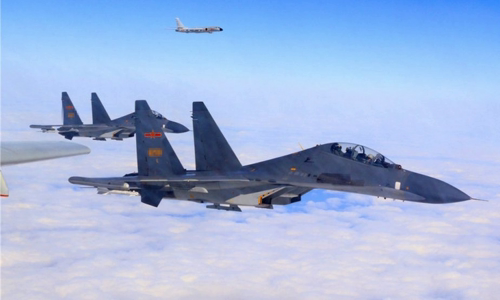The Chinese aircraft squadron crossed the median line on the Taiwan Strait, forcing the island defenders to deploy fighters.
Taiwan's defense agency said the Chinese air force deployed the KJ-500 early warning aircraft and J-11 fighters during a rehearsal around 7pm last night in the southwest of the island. This border had passed the "median line", the boundary implied as the line delineating the Taiwan Strait.

The J-11 squadron escorted H-6K bombers on the Taiwan Strait in 2018 Photo: PLAAF
The Taiwanese armed forces have sent fighter surveillance and signaled to chase Chinese fighters over the air.
"In addition to improving its ability to fight in all weather conditions, the Chinese aircraft fleet has sent a message that they are still operating normally, despite the outbreak of Covid-19," Huang Chieh-cheng said. , professor of international relations and strategic research at Dam Jiang University, Taiwan, reviews.
He also said that the exercise also aimed to test the reaction of other forces such as the United States, and implied that the Chinese air force could perform night duty. "Of course it's also a warning to Taiwan," Mr. Huang added.
This is the fourth time in two months that Taiwan has had to intercept Chinese aircraft. This series of moves seems to be the cause for the United States recently deployed two B-52 bombers to the east coast of Taiwan, then dispatched multitasking aircraft transport MJ-130J flying over the strait.
China considers Taiwan an integral part of its territory, ready to be united by force if necessary. Relations between the two sides became more tense after Thai Anh Van, who did not recognize the "One China" policy, became leader of the island in May 2016.
Since then, Beijing has been conducting military operations near the island and is believed to be pressuring countries to establish relations with Taipei. Despite Taiwan losing seven diplomatic allies, Thai in January was re-elected for a second term.



 SharonTribe
SharonTribe







